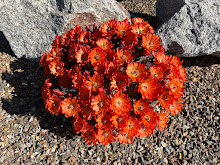Our gardens are alive with all manner of creatures and we must learn to live with them. We may not enjoy the visits to the vegetable patch of raccoons, rabbits and possums and we may try to prevent them feasting on the fruits of our labor, very often without success. But when it comes to bugs in the garden it pays to know who are your friends and who are your enemies. Keeping a balance in the garden is all important, not just to control populations but to provide food for nesting birds. I watched a cardinal removing a tomato horn worm from my tomatoes the other day. That was an eye-opener. Had no idea that there was a predator for those caterpillars.
Dr Margaret Gardiner, the author of this book Good Garden Bugs, assistant professor of entomology at Ohio State University is a gardener herself and knows all about beneficial insects. The main purpose of the book is to show the gardener how, by creating a balance of pest and beneficial insect, there will be less need for the use of pesticides. Most of us will be familiar with the more common beneficial insects, the lacewings, mantids and lady beetles, but it was quite an eye-opener to me to find out just how many lady beetles there are, and it was only last year that I discovered the larva of of the Scymus who cover themselves with wax spines. I thought they were mealy bugs.
And there is important information on why we should never buy the Convergent lady bugs sold at Home Improvement Stores and garden centers.
To welcome beneficials into the garden you must create the right kind of habitat for them. The book first introduces the kinds of native plants and conditions that will attract beneficial insects and then goes on to cover each of the eight families. Each section covers the habits and predatory nature of the family and is richly illustrated with close-up photography which will aid the gardener in identification. Did you know there were predatory stink bugs? Have I mistakenly killed one of the good guys? I shall be looking more closely next time.
I don't think everyone will look kindly on some of the beneficials described in the book. I, for one, am not too happy to have those paper wasps nesting in my umbrella and mud daubers building their condos on my walls but surely their presence means I have a good balance in the garden. These bugs are doing their job and most times I let them get on with it.
I was sent this book to review by Quarry Books. I chose to review the book because as a vegetable, herb and flower gardener I prefer not to use any chemicals in the garden and am always looking for alternative sources of bug control. I think most of us are now acutely aware of the harm pesticides can do to our wildlife and would chose to create a garden in balance. The book is a great reference for both new gardeners and seasoned gardener and would make a great gift for those new to gardening.
Subscribe to:
Post Comments (Atom)





























5 comments:
This looks like a good read.
I bought a book "Garden Insects" and while it was thorough (almost TOO thorough), it seemed there were 100 bad bugs for every good bug.
Will be nice to see a book that highlights the good.
Definitely a book I need to read. I am woefully undereducated on the subject of insects!
What a wonderful looking book! I am constantly being surprised by what is beneficial/predatory, and am trying not to automatically squash everything I find until I've investigated further into their preferred meal plan. I deeply appreciate your attitude and approach and have found that as I've increased the use of native plants in our beds that yes, they do attract pests, but they also attract the predators of those pests if I will simply be patient and allow the system to balance.
I too take issue with paper wasps nesting too close to the house, especially by frequently used doors, but I try to leave plenty of nesting opportunities around the perimeter of our outdoor spaces. And I am trying to knock down the numbers of aztec grasshoppers and flea beetles, but I know I won't get them all by hand, I can only ever hope to keep them in check.
Thanks for highlighting this great looking resource. Every "native" gardener should probably have a copy.
Any book that helps identify garden bugs is worth reading IMO. Are the ones in this book specific to a certain part of the US, or does it cover the whole thing? I don't necessarily want to be reading about bugs that I'll never see because they live in the north or southwest.
That's a good question Alan and one that I probably can't answer because I don't remember the bugs that I saw when we lived in Missouri. However, there must be many of these that are common to the whole of the USA. Do you have praying mantis, lace wings and fire flies? Beetles are well covered as are the various spiders and many wasps. The book makes for really interesting reading and is full of information for the gardener as to the lives of insects and how to garden to attract the good guys.
Post a Comment